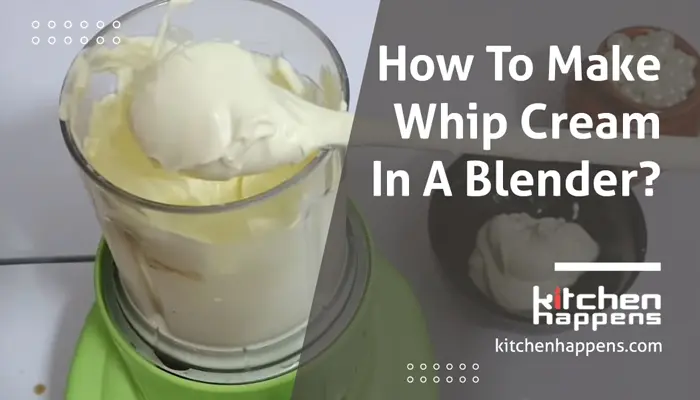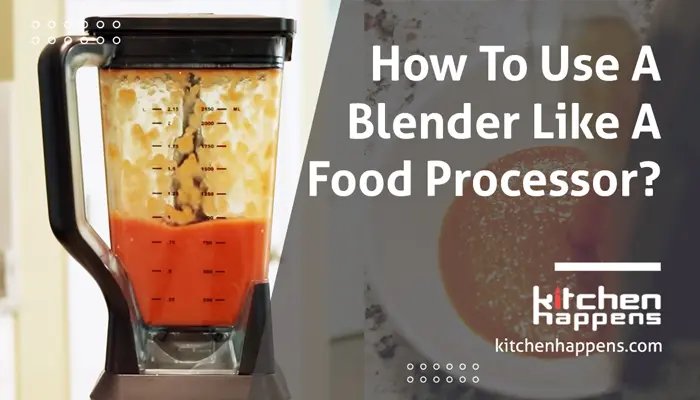Since protein supplements were invented, they have become essential for fitness lovers. Although people in sports and fitness initially used it, now it has gained popularity among general people who want to lead a healthy life.
Because of the rising demand, many protein powders have made their way into the market. And when you have so many options, you start to think about getting the best out of all.
That’s where a lot of questions come to mind, like can you mix different protein powders together, do you have to blend protein powder, whether it will destroy the fiber, or what is the correct method of blending protein, etc.
So, this write-up is dedicated to answering all your questions, and you will even learn new facts you never knew before. First, I want to clarify why mixing protein powder is hard, which will lead you to guess whether you need to blend them with a shaker or blender or not.
Why Is Protein Powder So Hard to Mix?
Some protein powders, especially those made from plants, are hard to blend because they include insoluble material. The more insoluble fiber a protein powder contains, the grittier your protein shake will be since insoluble fiber does not dissolve in water.
Additionally, some protein powders are rougher in consistency because they have undergone less processing (refinement) than others. Now even though this isn’t necessarily bad, No one can truly enjoy a gritty protein shake.
The majority of businesses include emulsifiers like lecithin in protein powder to make it simpler to blend. So, you may consider buying proteins that are made with ingredients like these.
Also, many people try to stir with a spoon which is definitely not gonna give a smooth consistency. As a result, you will be left with a lumpy mass that won’t look like the milkshake you expected!
The best way to mix protein powder without having any lump is using a shaker bottle. The whisk helps in breaking the clumps of protein powder when you shake. Most people consider shakers necessary for preparing a protein shake while on the go, which is true.
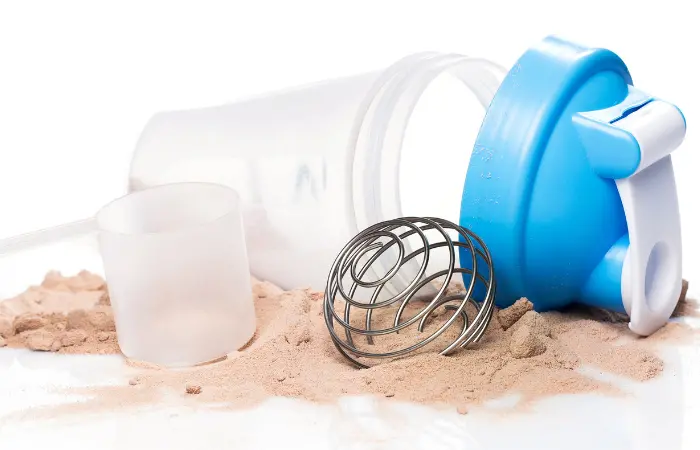
But is it the only way? Well, no, you can use your blender to do the job. It will give you a more smooth texture, and the taste will be amazing as well.
Do You Have to Blend Protein Powder? Get More Benefits!
If you want to get maximum benefits from your protein shake, blending protein powders will surely give you a satisfying result. When it comes to mixing protein powder with other supplements, there are no strict guidelines to follow. It’s all about finding blends that you like the taste of and that promote your health goals.
Yet, there are a few pieces of information that you need to know.
First of all, you should know about protein digestion. Casein, whey, and soy all supply protein in different ways. Since soy is a “complete” protein, it contains all the essential amino acids that you require.
20% of the protein in milk is made up of whey, which digests quickly and is useful when you need to quickly supply protein to your muscles, such as just after a workout. And finally, casein, which makes up 80% of the protein in milk, has the capacity to slow down the body’s digestion of protein which results in the breakdown of muscle.
According to the theory, if you digest a mixture of proteins that digest at various rates, it would increase the availability of amino acids (the building blocks of muscle), boost muscle protein synthesis, and ultimately result in the development of more muscle. So, If you blend whey protein powder with casein protein, it will be better for muscle building than just taking whey protein alone.
To determine whether this is the case, researchers at the University of Texas Medical Branch (UTMB) let 16 healthy subjects take either a protein shake made from a soy-dairy blend (50% caseinate, 25% isolated DuPont Danisco SUPRO soy protein, and 25% whey protein isolate) or a single protein source (whey protein isolate).
This was given one hour after strength training. And before the trial and up to five hours following the activity, muscle samples were obtained.
After an hour, the result came out like this: compared to the whey-only drink, the soy-dairy blend shakes provided more amino acids for about an hour longer.
Furthermore, those who drank the protein blend had a better balance of amino acids than those who drank whey, indicating that less muscle protein breakdown was happening.
However, more research is still required to determine what the long-term effects of protein mixing can be on muscle mass and strength. But that doesn’t mean you can’t have a custom blend of proteins of your own. And I will suggest you try mixing the flavored powder with unflavored ones.

Will Blending Protein Powder Destroy It?
Absolutely not! The mixture of different protein powders will help you develop muscles, produce hormones and enzymes, and repair tissues.
The content of the protein, whether it comes from plants or dairy, won’t change when you combine it. The only change will be in flavor, and nothing else will be affected.
How to Blend Protein Powder?
Mixing protein powder in a proper way is the key to getting the nice texture that you want. And when you know how to do it correctly, nothing can go wrong with your protein shake. So, here is the guideline.
Step 1: Follow The Instructions
First of all, read the directions labeled on your chosen protein powder to know the number of scoops required per serving. Some recommend using one scoop, while others suggest using two.

Step 2: Choose Your Base And Mixing Technique
For the base, you should always choose a liquid according to your taste and dietary needs. Consider the protein powder’s flavor, the ideal temperature and consistency, and whether you need to limit your consumption of calories or carbohydrates.
Now, most manufacturers of protein powder recommend using water, but that doesn’t mean you can’t alternate it. You can choose milk of any type (cow, almond, or cashew milk), juice, lemonade, coffee, tea, pudding, or yogurt.
After you choose the base, it’s time to select the mixing equipment. A shaker (also known as a blender bottle) is one of the best options. It blends protein powder smoothly and leaves no lumps.
But, wait, wait! A shaker bottle will only give you the best result when you choose to make plain shakes, like mixing only protein powders. If you want to add other ingredients like fruits, ice, or yogurt, you will need a blender.
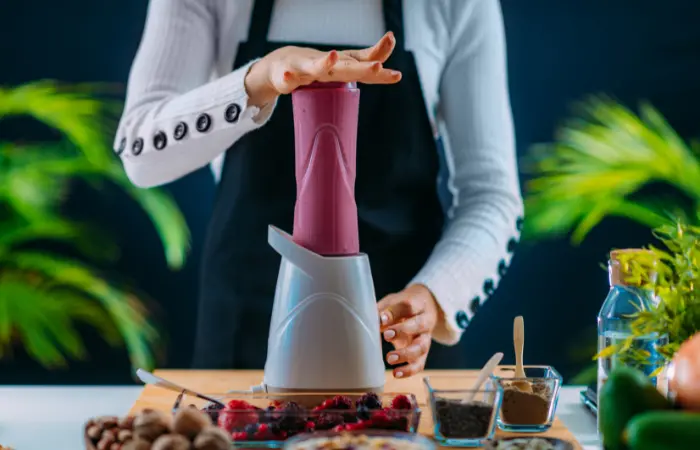
Step 3: Measure And Mix Half of The Required Amount
Measure your chosen liquid into a glass and then pour it into the shaker bottle or blender. Then follow the directions written on the protein powder label. Usually, it says to use six to eight ounces per serving, but you can adjust the quantity if you want a thicker or thinner shake.
If your liquid is cold or at room temperature, add half the recommended amount of protein powder to the container. And pour a small amount of tepid water into a different glass to make a paste before adding it to the hot coffee, tea, or soup.
Step 4: Shake Or Blend
If you are using a shaker container, then close the lid and shake it until mixed thoroughly. And if you use a blender, use the pulse button and blend for a few seconds.
Let the mixture rest for a minute, and then add the remaining half of the protein powder to the shaker or blender. Shake or blend again till all lumps are gone.
You can also blend ice cubes or fruit with hot liquids to make a protein smoothie, or you can add hot liquids to the paste of room-temperature protein powder and stir with a spoon. It will provide extra flavor to your protein shake.
And here it is, your freshly made protein powder shake is ready for you to enjoy!
Now, what are you gonna do if you don’t have a shaker bottle and also your blender isn’t working for some reason? Of course, there are many other ways to blend foods without a blender, but here we are talking about a liquid base.
Well, don’t worry, as I won’t let you hang with such confusion. Just go through my next segment, and you will know the solution.
How to Mix Protein Powder Without Shaker Or Blender?
Here are a few ways to make a protein shake without a shaker or blender.
Option 1
If you have a travel coffee mug with a secure lid, it will work. Add your protein powder, the liquid of your choice, and a few ice cubes in it. The ice cubes will work as a whisk when you shake the coffee mug, breaking up the powder clumps.

By the way, if you don’t have a travel coffee mug, you can also use a water bottle with a tight-fitting lid.
Option 2
You can mix your protein powder in a mixing bowl by using a balloon whisk. Remember that the protein powder will dissolve more quickly in a warmer liquid. And if you want a cold protein shake, you can always add ice cubes later.
Option 3
Take a glass, pour your liquid, slowly add the protein powder, and stir with a spoon constantly. If you add the whole required powder and then stir, the powder will clump and won’t mix smoothly. So, make sure to let each spoonful dissolve completely before adding more.
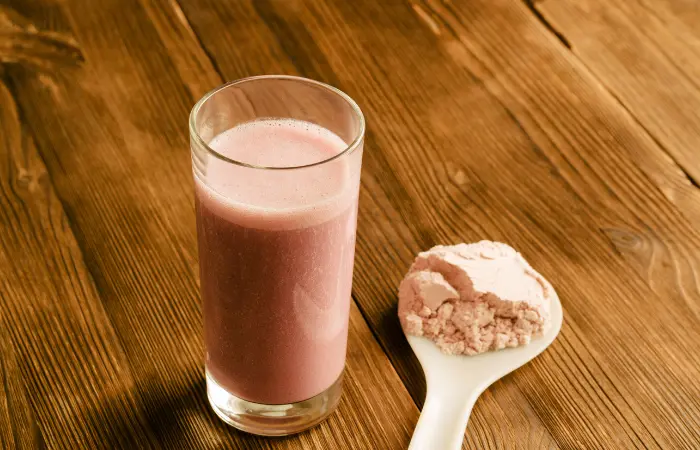
Option 4
Instead of making a shake, you can take your protein powder with other meals. For example, you can add protein powder to your pancake, oatmeal, yogurt parfait, or waffle mix.
Also, you can bake with it. Just replace up to half of the required flour with the protein powder in your batter for making muffins, bread, cookies, and other baked goods. It has a wonderful flavor and will improve your nutrition.
Why Do My Protein Powder Clumps? Learn The Reason
Even after you follow the right way to blend protein powder, it sometimes clumps. And to avoid the clumps, first, you have to understand why it’s happening.
The majority of protein powders contain fat and/or protein molecules that attract some water to themselves. And that’s the reason. It will clump up if you don’t keep your protein powder in a cool, dry place.
This explains why the powders can occasionally clump together when you add the liquid. Since the molecules are hydrophilic, they are simply carrying out their natural functions of attracting and retaining moisture.
Now, if you use a whole food-based, organic protein powder like Natural Force Organic Whey Protein, which doesn’t contain any anti-clumping ingredients like lecithin and silicon dioxide, in that case, this could be an even bigger problem.
Although moisture absorption can result in some unpleasant clumps, it has no impact on the effectiveness or quality of your protein powder. But, still, it will be unpleasant to drink. So, I suggest you go through my next section, where I share tips on how you can keep your shake smooth.
5 Tips to Make The Perfect Protein Shake Without Lumps
Follow these tips to make the perfect lumps-free protein shake every time.
1. Use The Right Tool for Blending
Your best bet is a high-speed blender, but a shaker bottle is also a great choice. Combine all of the ingredients in a blender (be sure to place the protein powder on top of the liquid!) and blend until smooth.
If you’re using a shaker bottle, pour half of your liquid first, then top with protein powder and shake. Add the remaining liquid once the powder has been thoroughly blended, then shake again.
If you don’t have the shaker and blender, I already mentioned the other tools you can use in a previous section. So, try to follow that.
2. Add Protein Powder on Top of The Liquid
This simple but effective hack works with almost all protein powders on the market. You can first pour your liquid and then add the protein powder on top of your liquid. Although it won’t guarantee a drink free of clumps entirely, it certainly helps.
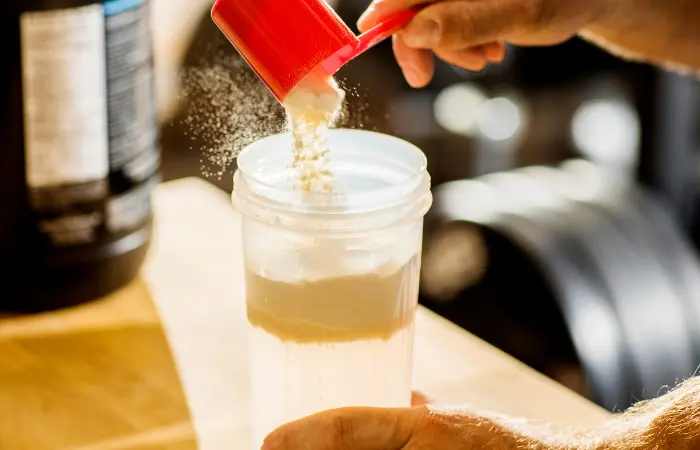
This method works especially well if you use a smoothie blender. It is most likely the reason for any protein lumps you may find at the bottom of your mixing cup. So, pour the liquid, then top it with the powder.
Doing such will prevent the hassles of cleaning protein out of the bottom of your cups! As a result, cleaning your blender bottle will be much easier than before.
3. Shake, Sift, Or Break Up The Clumps
Most protein and pre-workout powders can clump if they are stored for a long time. It doesn’t mean they are bad or you should dump them. Instead, shake the jar of protein powder or use a fork to break up big clumps. You can also sift it before adding the powder to your smoothie.
4. Add Some Ice Cubes to Your Shaker Bottle
Although there is a metal ball in most of the shaker bottles to help blend, adding ice to the bottle can create an extra force to mix the protein powder better. It doesn’t only keep the lumps away but also gives your protein shake a cool, refreshing flavor.
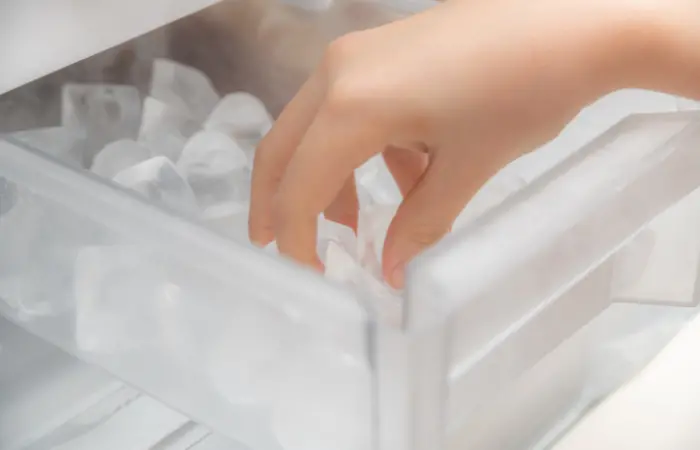
5. Keep Your Protein Powder in A Dry, Cool Place
Most of us read this instruction on dry food containers but don’t follow it most of the time. Well, after all, we are just human!
Anyway, your protein powder’s texture will completely change because of heat and moisture. So, following the instructions is a must. If you live in a humid region, you may also consider storing a food-safe humidity control packet at the bottom of your protein powder container.
Another suggestion is to ensure that the scoop you use for protein powder stays dry. Allow the scoop to dry completely before reusing it in your container if you need to wash your protein powder scoop. If there is any moisture in your container, it will cause clumping and possibly even foodborne illness.
Can You Pre-Mix Protein Powder?
Even though pre-mixing your protein shake is not harmful, it is not the best idea either. When you mix your protein powder with liquid, it begins to break down into amino acids, making it ready to refuel your muscles and refresh your body.
Although pre-mixing your protein shake won’t impact the protein content, it won’t likely taste as fresh as mixing and drinking instantly.
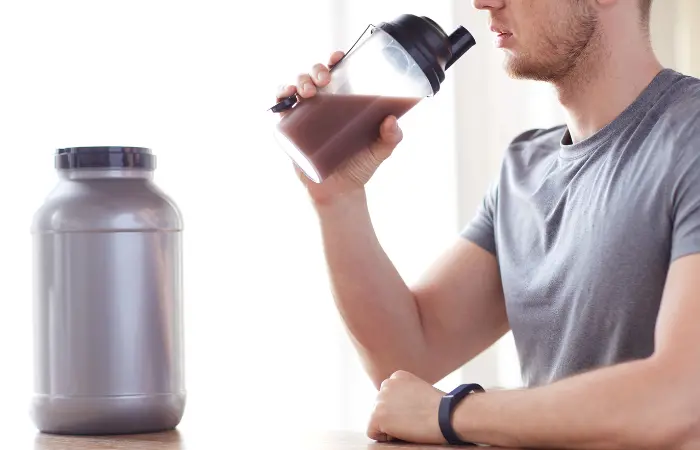
But does that mean you can make a protein shake days before drinking? Well, that’s why you need to know how long a blended protein shake lasts.
How Long Does Blended Protein Powder Last?
After blending the protein shake, it will last only 2 to 4 hours at room temperature and 72 hours in the refrigerator. If you blend your protein shake with the fruit or vegetable smoothie, it will only last for a while at room temperature and in the refrigerator.
After your smoothie protein has been refrigerated, make sure to reblend it or give it a good shake before consuming it because separation happens.
I advise you to consume your protein shake within 2 to 4 hours because, as you may be aware, fruits and vegetables also start to degrade when exposed to oxygen during the blending process.
Learn Which Protein to Pick According to Your Need
Since the options for protein powder on the market have increased, you might need help with which one to pick. Also, if you choose to blend different proteins, you should know which ones you need and which to skip.
So, take a look at each option mentioned below and choose for yourself.
- Whey
Whey is typically considered the gold standard when it comes to supporting muscles. Amino acids are the basic components of this protein. Whey mixes easily with smoothies as well. According to research, it promotes muscular growth when combined with a strength exercise.
However, whey contains milk sugar lactose. So, whey is not for you if you don’t consume dairy products or are vegan.
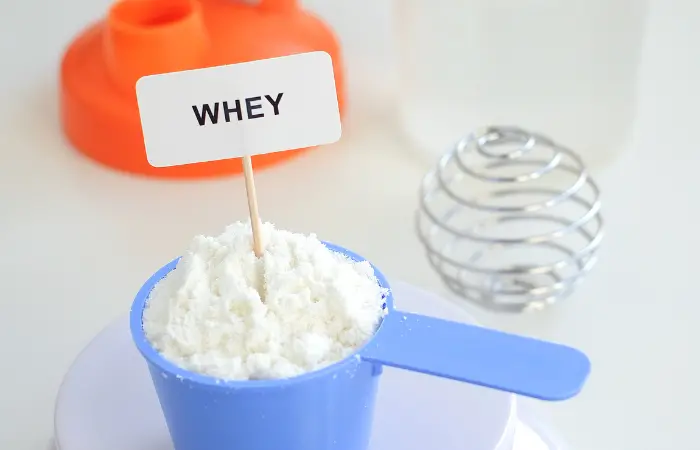
- Soy
Soy is a plant-based protein and can promote muscle building just as effectively as whey protein. It also contains isoflavones, which have been related to protection against heart disease, osteoporosis, and certain cancers.
Since soy is one of the top nine food allergens, many food companies have switched to other plant protein sources.
- Pea
Now, if you want to avoid dairy and soy, you can choose pea, as it is a great vegan alternative. Keep in mind that pea protein has a slightly grassy flavor, which some people dislike.
- Hemp
If you want to increase your consumption of fiber, omega-3, and 6, hemp protein might be the best option for you. Note that you have to store this powder in the refrigerator due to its fat content.
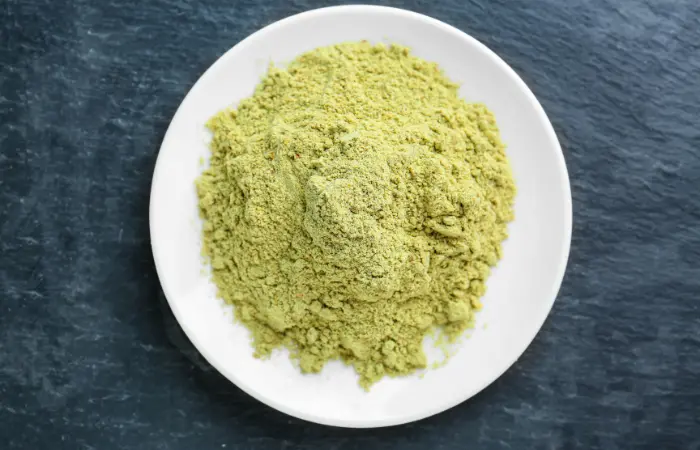
- Brown Rice
This plant-based powder mixes well in smoothies and baked dishes and is also easy to digest. Since brown rice protein has less amino acid lysine, it’s a good idea to have a range of protein sources to cover all the bases.
- Bone Broth
You can dry and use this incredibly nourishing food as a powder. Bone broth is easily digested, which may benefit you if you have trouble with the higher-fiber plant proteins.
Additionally, hyaluronic acid and collagen included in bone broth powder positively affect the skin and maintain healthy joints (chondroitin and glucosamine). Additionally, it fits the paleo diet and is suitable for those who must avoid egg protein.
- Cricket
Crickets are another fantastic source of protein that is also paleo and keto-friendly. Although cricket powder is free of soy, dairy, and gluten, it might not be safe for people who have seafood allergies.
- Almond
This powder can be your go-to choice if you love almonds. You can use this protein powder in various dishes, such as smoothies and muffins since it only contains almonds as an ingredient. You can also use it to make almond butter.
You will receive significant amounts of naturally occurring calcium, potassium, and protein. With 180 calories in a serving size of 1/3 cup, this option has more calories.
- Chocho
Chocho is one of the newest entrants in the protein powder market. Therefore, many people are not familiar with it. Chocho is a variety of lupin bean that has been cultivated in the Andean Mountains for over 1,500 years.

It is a healthy protein source that also contains calcium, magnesium, vitamin E, and a lot of fiber. It is also free of dairy, soy, and gluten.
Except for all the above protein powders, there are protein blends found in the market that are a mixture of different proteins. So, you can either blend proteins according to your preference or try the blends that are found in the market.
Final Thoughts
You have learned that different protein sources have different characteristics that might help you in different ways, and they are not all the same.
So, do you have to blend protein powder? The answer is it depends on your preference. But of course, there is no denying that you can gain several advantages from a single shake by blending different proteins.
Also, make sure to use a shaker or blender to mix all the proteins and follow all the tips I have provided throughout the whole writing, and you will be good to go.
Frequently Asked Questions
Is it bad to use a blender to blend protein powder?
No, nothing harmful happens if you use a blender to mix protein powder. In fact, the blender is one of the best options to do the task. There is a misconception that a blender may break up the amino acids in a protein, but it’s not true. Mechanical agitation has nothing to do with the chemical bonds of the protein. So, be free to use your blender.
Can you use an immersion blender to mix protein powder?
Yes, you can definitely use an immersion blender to mix protein powder into liquids. But note that it can’t crush ice or fibrous veggies. So if you want to make a smoothie protein shake with these items, you must use a countertop blender.


